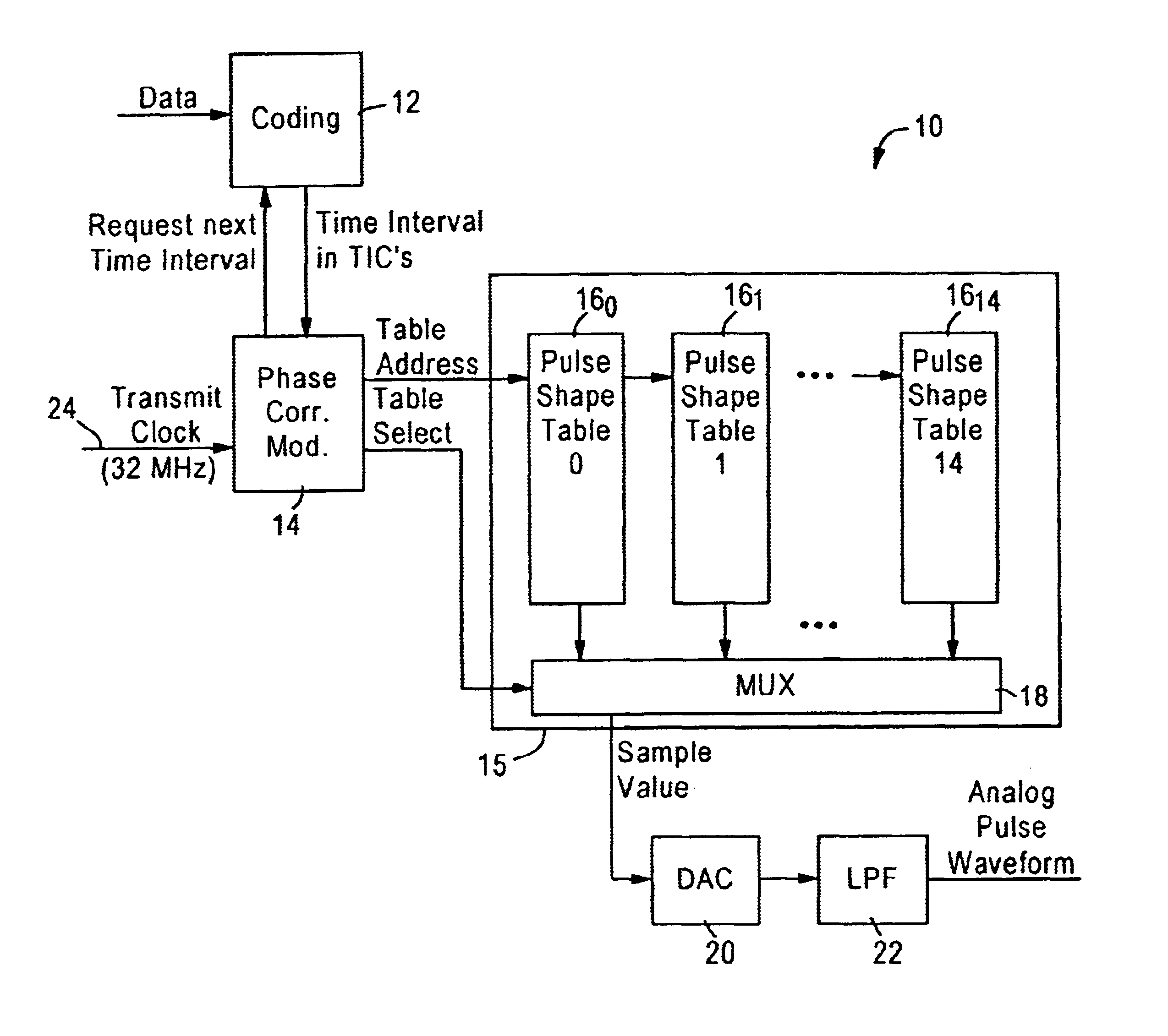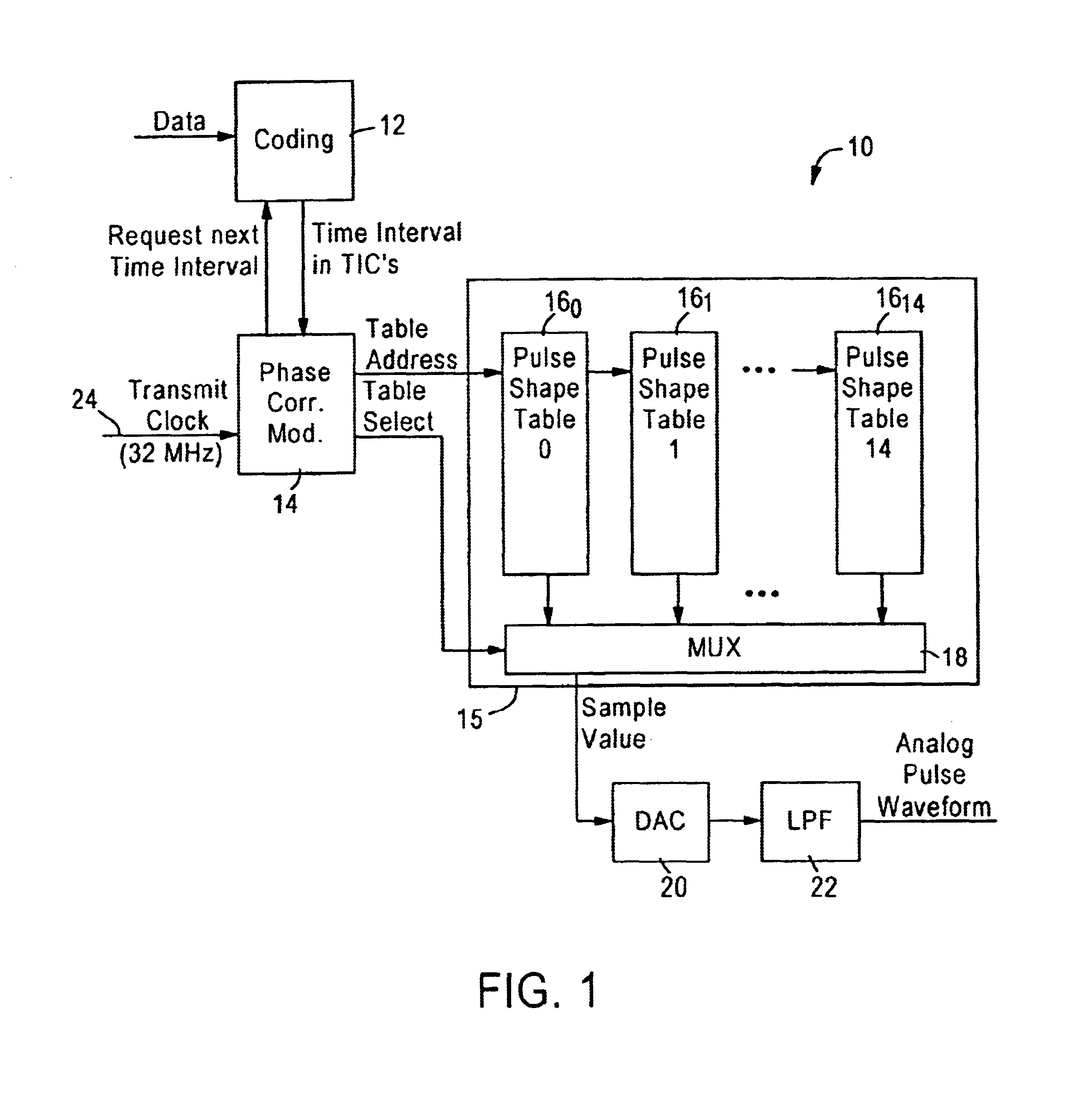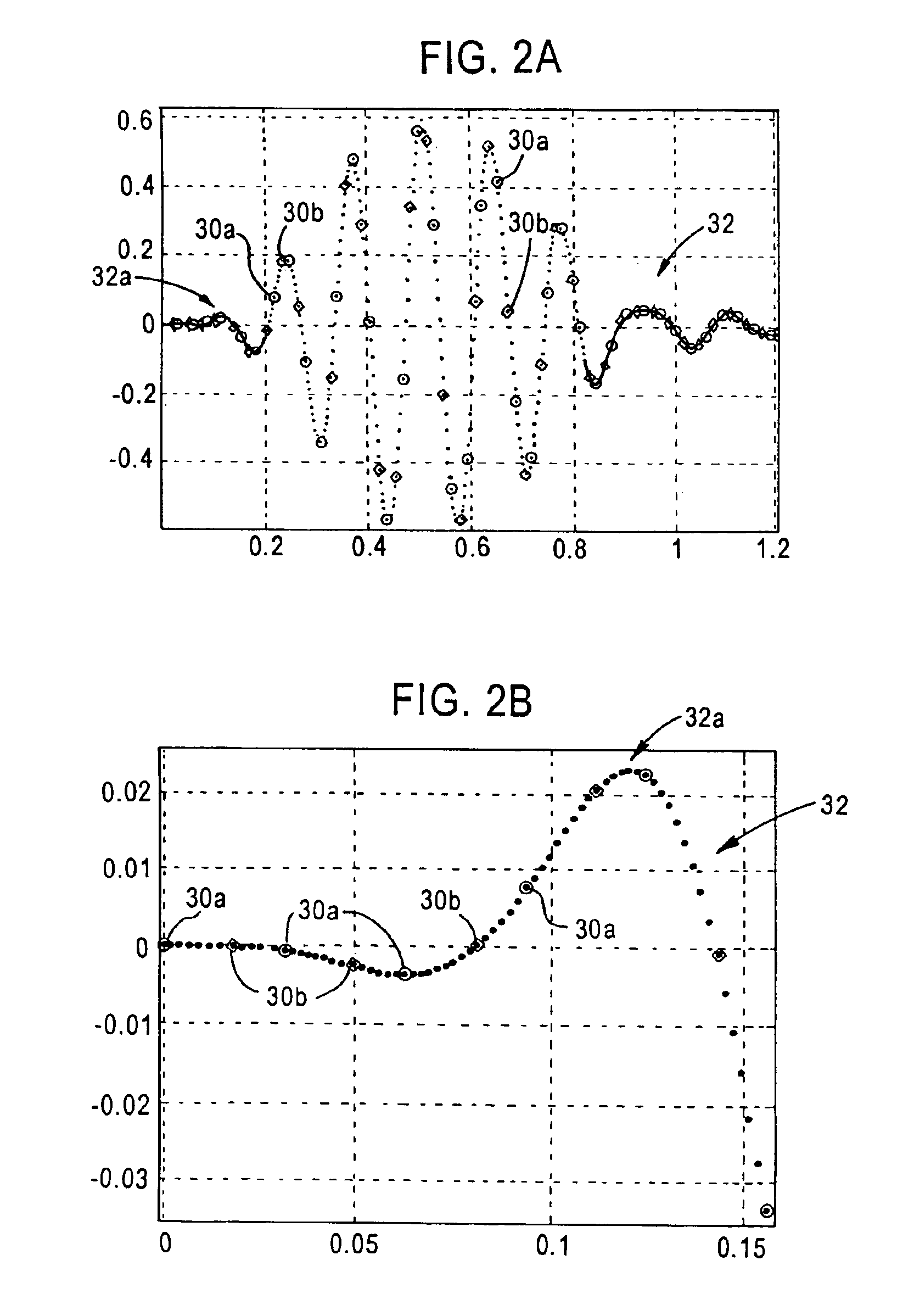Arrangement for reducing transmitted jitter
a technology of jitter reduction and communication system, applied in pulse position modulation, pulse technique, error detection/prevention using signal quality detector, etc., can solve the problems of difficult implementation of acquired tic time, inherently noisy telephone lines, and twisted pair telephone lines suffering from turn-on transients. , to achieve the effect of reducing jitter in transmit waveform communication system
- Summary
- Abstract
- Description
- Claims
- Application Information
AI Technical Summary
Benefits of technology
Problems solved by technology
Method used
Image
Examples
Embodiment Construction
[0025]FIG. 1 is a block diagram illustrating a pulse position modulation communications system 10 configured for outputting an analog pulse waveform at selected transmission time instances according to an embodiment of the present invention. The pulse position modulation communications system 10 may be implemented, for example, in a home PNA physical layer transmitter configured for generating analog home PNA pulses on the boundaries of TIC times that are defined based on a specified transit clock having a normalized period of {fraction (7 / 60)}. In particular, the pulse position modulation communications system 10 includes a coding block 12 configured for generating time interval values, representing respective data values, as unit multiples of a 166.667 ns TIC time.
[0026]The system 10 also includes a phase correction module 14, and a pulse shape table circuit 15. The pulse shape table circuit 15 includes pulse shape tables 16 and a multiplexer 18. The multiplexer 18 is configured f...
PUM
 Login to View More
Login to View More Abstract
Description
Claims
Application Information
 Login to View More
Login to View More - R&D
- Intellectual Property
- Life Sciences
- Materials
- Tech Scout
- Unparalleled Data Quality
- Higher Quality Content
- 60% Fewer Hallucinations
Browse by: Latest US Patents, China's latest patents, Technical Efficacy Thesaurus, Application Domain, Technology Topic, Popular Technical Reports.
© 2025 PatSnap. All rights reserved.Legal|Privacy policy|Modern Slavery Act Transparency Statement|Sitemap|About US| Contact US: help@patsnap.com



